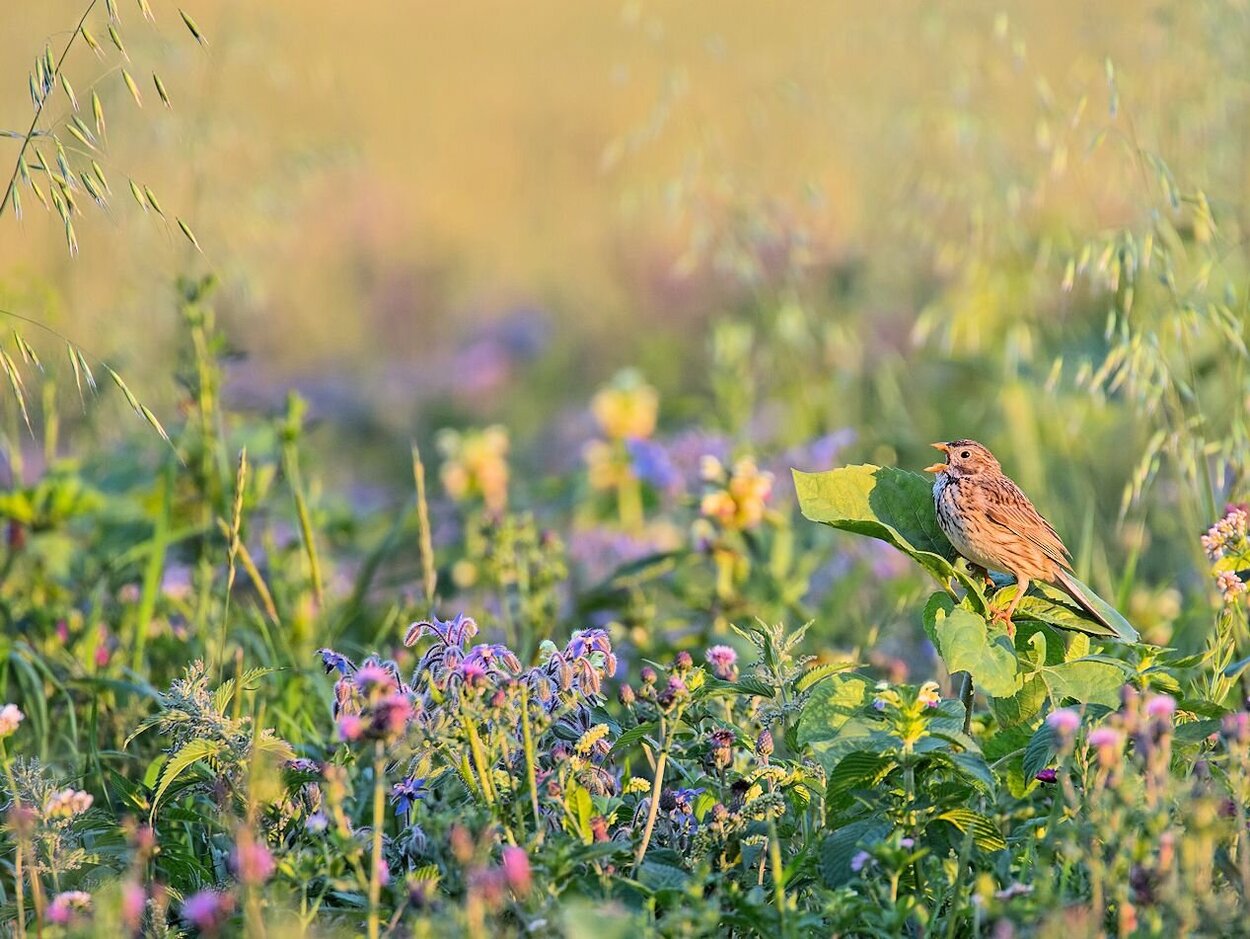Many species groups in Germany's agricultural landscape have experienced a sharp decline in recent decades, both in the number of individuals and species. Fallow land is considered an effective measure to slow this decline. Researchers from the Thünen Institute, the Dachverband Deutscher Avifaunisten (DDA) and the University of Göttingen have investigated the relationships between the proportion of fallow land and the number and abundance of agricultural birds over a nine-year study period.
The results not only reveal that fallows can generally contribute to an improvement in the population situation of agricultural birds. The benefit of fallows also depends crucially on the complexity of the surrounding landscape.
To determine where fallows should be most effectively established, the researchers had studied fallows in agricultural landscapes of varying complexity. Complexity was measured by the density of boundary lines between fields and between fields and adjacent woody structures such as hedgerows or forest edges. Data from the nationwide monitoring of common breeding birds (MhB) as well as data from agricultural statistics were used for the evaluation.
The results, which have now been published in the Journal of Applied Ecology, show that the establishment of fallows is particularly effective in agricultural landscapes that have a medium level of complexity. The average density of boundary lines in Germany is around 65 meters per hectare of agricultural land. The authors therefore recommend promoting fallows primarily in those regions with medium structural complexity.
"With our research, we were able to identify regions where fallow land should preferably be established in order to have the greatest impact," summarizes Dr. Sebastian Klimek from the Thünen Institute of Biodiversity in Braunschweig, who coordinated the study. "In order to halt declining population trends of agricultural birds nationwide, it is necessary to maintain a minimum proportion of fallow land in the agricultural landscape," adds Prof. Dr. Johannes Kamp of the University of Göttingen, who also represents the DDA as an advisory board member.
The EU's Common Agricultural Policy (CAP) has a strong influence on the total area of fallow land in Germany. Due to changes in the CAP, fallow land has decreased significantly since the early 2000s. The loss of fallow land, especially after the abandonment of set-aside in 2007, led to a lack of suitable breeding sites and food for many bird species. Although the so-called "greening" of the past CAP funding period has slightly increased the total area of fallow land in Germany as of 2015, the pre-2007 level has by no means been reached again. In the new CAP funding period starting in 2023, there is an obligation for farms to set aside 4% of their arable land. This could contribute to an improvement in the population situation for many agricultural birds. In order to restore the pre-2007 level of the agricultural bird population, a further increase in the area of effective biodiversity enhancing measures in the agricultural landscape is necessary.
The studies were funded by the Federal Ministry of Food and Agriculture in the project "Monitoring of Biodiversity in Agricultural Landscapes" (MonViA). The nationwide bird monitoring is supported by the Federal Agency for Nature Conservation with funds from the Federal Ministry for the Environment and the environmental ministries of the federal states.
Original paper:
Hertzog L R, Klimek S, Röder N, Frank C, Böhner H G S, Kamp J (2023) Associations between farmland birds and fallow area at large scales: consistently positive over three periods of the EU Common Agricultural Policy but moderated by landscape complexity. Journal of Applied Ecology. DOI:10.1111/1365-2664.14400







